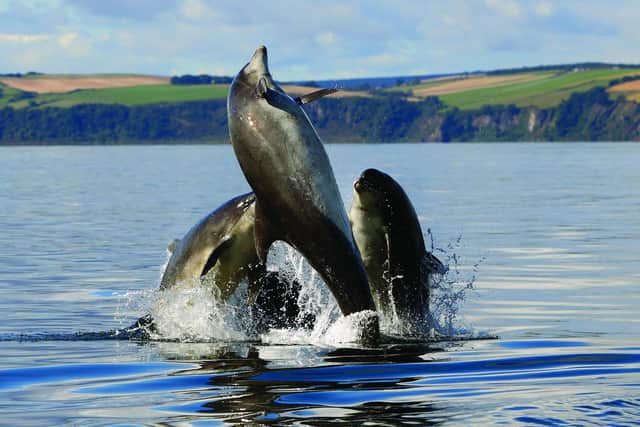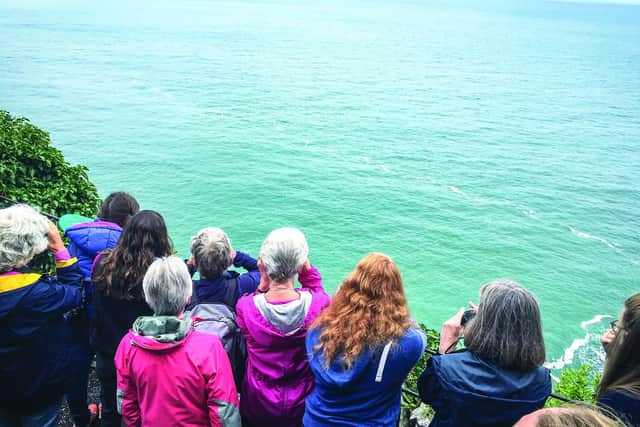Summer travel 2022: See you on the flipside
While some pods will seasonally migrate north from England to follow food supplies of fish, squid and octopus, bottlenose dolphins are present in Scottish waters all year round.
Individuals reach maturity from about six years old and may live for 50 years, but to see one of any age, you just need to be in the right place at the right time – and to know what you are looking for.
Advertisement
Hide AdAdvertisement
Hide AdThe east coast supports aresident population of around224 bottlenose dolphins. They have been monitored since 1990 and the population is currently considered to be increasing in size. They are most commonly spotted in the Moray Firth, Tay Estuary and Firth of Forth, but in recent years the mammal’s range has expanded further south along the Scottish coast and into northeast England.


A smaller west coast population is found in two distinct groups. Some 30 to 40 bottlenose dolphins range between Skye and Kintyre in the Inner Hebrides, with a further12 to 15 animals in the waters around the Isle of Barra.
Famous dolphin spotting points on land include Tiumpan Head on the Isle of Lewis and Neist Point on Skye, but the Moray Firth is by far the best and most accessible place to see a bottlenose, according to Katie Baker, outreach officer of the Sea Watch Foundation – and she says July is the perfect time.
This summer, Katie is co-ordinating the foundation’s 21st annual National Whale and Dolphin Watch. Over nine days, from 23 July, the citizen science event will encourage members of the public to conduct watches for whales, dolphins and porpoises across the country and to join in with raising awareness on how to protect these beautiful species.
She says: “The National Whale and Dolphin Watch offers a chance to create a snapshot of what can be seen in our coastal waters in a short period of time.”


No special knowledge is needed to take part in the week, although keen observers can sign up to training courses or use a SeaWatcher app and species guides to get involved.
During last year’s event, more than 1,630 sightings of cetaceans were reported, involving in excess of 9,000 individual animals.
Katie says the ideal conditions for dolphin spotting is a still day. “The calmer the better – you are looking for a blank canvas, so you can scan a large area noticing any breaches of the surface.
Advertisement
Hide AdAdvertisement
Hide Ad“In rough weather, you are likely to miss them, and if you do see them it is more difficult to tell what you’re looking at. On a still day, you may hear them before you see them too.”
The Moray Firth is not only good for spotting dolphins because of the size of the resident population, but also – according to Katie – because of the landscape surrounding it. “There are lots of vantage points and it isn’t just a bottlenose sighting that you are looking for, people see humpback whales too.”
Essentially, it comes down to patience. Katie adds: “Find a good position and come prepared to stand there all day.”
Danny Groves of Whale and Dolphin Conservation agrees that spotting any whale or dolphin is always best in late-spring and summer, as the calmer sea state makes them easier to see.
As to identification, he says: “They are generally relatively large, chunky individuals with a dark grey back and paler belly. In fact, the bottlenose dolphins in Scotland tend to be the largest on account of their thick blubber that helps keep them insulated from the very cold Scottish waters.”
Danny says other distinguishing features are a short, stubby beak and that endearing mouth shape that makes them look as though they are smiling. Individuals can be recognised by distinct notches and markings on their dorsal fin – as unique as fingerprints.
But Danny advises against trying to spot dolphins from the water. “A growing concern is the issue of disturbance by those using the water for leisure activities.
“Marine mammals like bottlenose dolphins are sensitive to this kind of disturbance, especially when they have young, or are resting, feeding or socialising.
Advertisement
Hide AdAdvertisement
Hide Ad“People out on the water in leisure craft, jet skis, paddleboards and kayaks can scare them away from important habitats and, in extreme cases, injure or kill them.
“UK waters are a rapidly growing destination for marine recreation and tourism and we always recommend spotting dolphins from vantage points on land. A good encounter is one that is enjoyable for you and the dolphins.”
To find out more about National Whale and Dolphin Watch visit: www.seawatchfoundation.org.uk